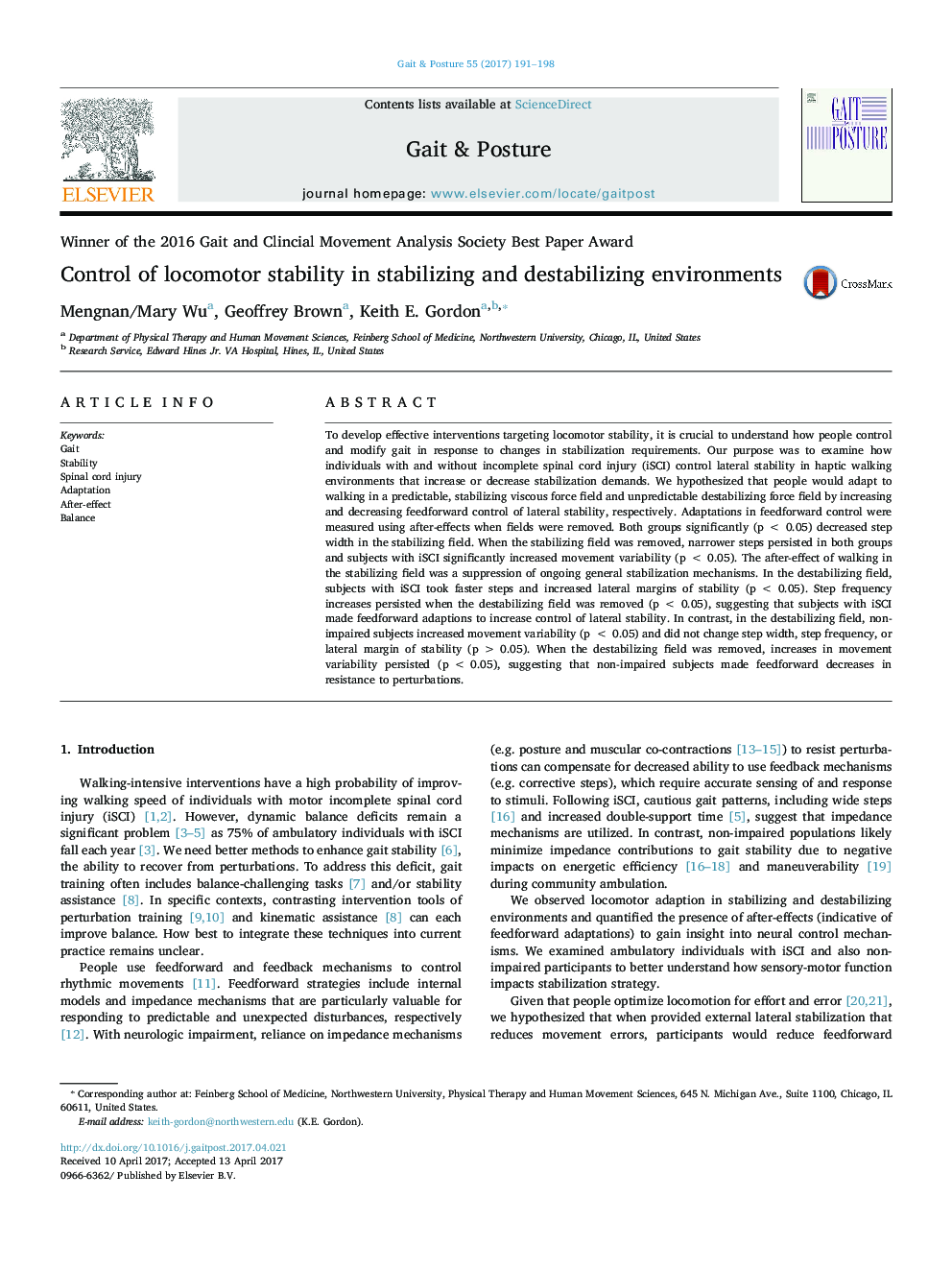| Article ID | Journal | Published Year | Pages | File Type |
|---|---|---|---|---|
| 5707882 | Gait & Posture | 2017 | 8 Pages |
Abstract
To develop effective interventions targeting locomotor stability, it is crucial to understand how people control and modify gait in response to changes in stabilization requirements. Our purpose was to examine how individuals with and without incomplete spinal cord injury (iSCI) control lateral stability in haptic walking environments that increase or decrease stabilization demands. We hypothesized that people would adapt to walking in a predictable, stabilizing viscous force field and unpredictable destabilizing force field by increasing and decreasing feedforward control of lateral stability, respectively. Adaptations in feedforward control were measured using after-effects when fields were removed. Both groups significantly (p < 0.05) decreased step width in the stabilizing field. When the stabilizing field was removed, narrower steps persisted in both groups and subjects with iSCI significantly increased movement variability (p < 0.05). The after-effect of walking in the stabilizing field was a suppression of ongoing general stabilization mechanisms. In the destabilizing field, subjects with iSCI took faster steps and increased lateral margins of stability (p < 0.05). Step frequency increases persisted when the destabilizing field was removed (p < 0.05), suggesting that subjects with iSCI made feedforward adaptions to increase control of lateral stability. In contrast, in the destabilizing field, non-impaired subjects increased movement variability (p < 0.05) and did not change step width, step frequency, or lateral margin of stability (p > 0.05). When the destabilizing field was removed, increases in movement variability persisted (p < 0.05), suggesting that non-impaired subjects made feedforward decreases in resistance to perturbations.
Related Topics
Health Sciences
Medicine and Dentistry
Orthopedics, Sports Medicine and Rehabilitation
Authors
Mengnan/Mary Wu, Geoffrey Brown, Keith E. Gordon,
